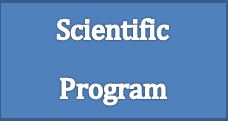
Euis Holisotan Hakim
Institut Teknologi Bandung, Indonesia
Title: Bioactive natural product exploration of indonesian moraceous plants
Biography
Biography: Euis Holisotan Hakim
Abstract
About 30,000 species of plants are distributed in Indonesia and 940 species among these had been used for health care, even though only 120 species of which are involved in Indonesian natural medicines. Over the centuries, the use of medicinal plants has become an important part of daily life despite the progress in modern medical and pharmaceutical research. In connection with our continuing studies on Indonesian tropical plant, a phytochemical investigation of several families of plant has been undertaken in our laboratory, including Lauraceae, Dipterocarpaceae and Moraceae. From Lauracea family of plant, we isolated benzylisoquinoline alkaloid, 2-pyrone and lignan derivatives, while Dipterocarpaceae mostly contains stilbene oligomers. The Moraceae which is known as mulberry family comprising about 40 genera and over 1,000 species spread out in tropical and subtropical regions including Indonesia. Morus, Artocarpus and Ficus are the most important genera belonging to Moraceae family; these genera economically are valuable because of the quality of its timber and produce edible fruit. The leaves of Morus are very popular for feeding of silk worm (Bombix mori). Most of these species are used in traditional medicine in many places and well known as “sohakuhi” in Japan and “sangbaipi” in China. All parts of plant tissues of Morus alba species
are reported to be used in folk medicine (leaf for hypertension, root bark for asthma, fruit for anemia and branch for arthritis). Chemical evaluation of Artocarpus showed mainly prenylated flavonoid with variety of modified skeleton which involved pyrano-, oxepino- and xanthone- rings. And phenolic compounds isolated from Morus mostly stilbenoid and arylbenzofurane derivatives in addition to flavonoid and Diels-Alder type adducts, have exhibited an interesting biological activity including anti-tumor activity. Development of root culture of M. macroura yielded mostly Diels-Alder type adduct compounds such as Chalcomoracin and Kuwanon J, while shoots culture of this species produce a prenylated chalcones namely morachalcone and isobavachalcone which are identified as dienophile founded in Diels-Alder type adduct of Morus. The root culture of M. cathayana afforded O-methylated Diels-Alder adduct compounds which were secreted to the media. Further investigation of enzyme which is responsible for the Diels-alder adducts production of Morus plant showed a promising data for combinatorial biosynthesis study. And recently we tried to explore endophyte microbe of Morus, from which some strains of fungi containing highly potential cytotoxic cytochalasins and few compounds of epiquinophomopsin derivatives were identified.

